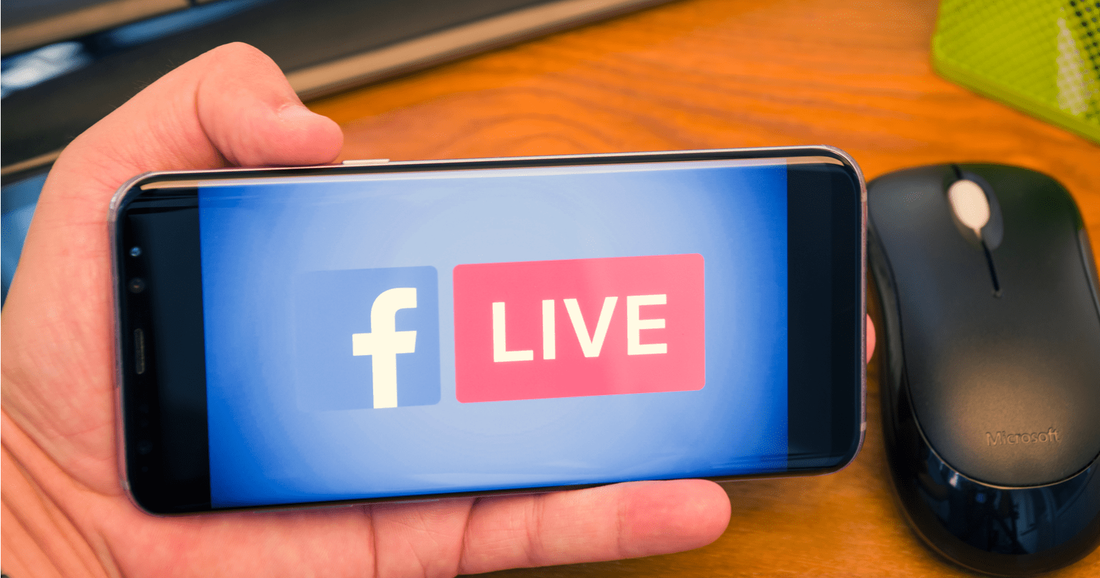|
“How should my church handle the Coronavirus?” That’s the million dollar question on the mind of every local pastor, staff member, lay leader, volunteer and congregant. And rightfully so. As the situation continues to unfold and change rapidly — with new information, guidelines, gathering size recommendations, and restrictions being released every day — many churches have moved to online-only until this thing blows over. Churches of 100+ congregants are choosing not to meet at all or are streaming their worship services via Facebook Live, YouTube, broadcasting on their websites, church apps, and other various platforms. Many church small groups are taking advantage of video conferencing tools like Zoom, GoToMeeting, Skype, FaceTime, and others, especially since you can’t even meet at a local Starbucks right now (which is probably a sign of the Apocalypse, but I digress.) Anyway, megachurches naturally have to be careful as they’re, well, bigger than everyone else. I get that. Precaution is a good thing. God gave us brains. Let’s be good little human beings and use them. But, what about the small churches? The tiny rural ones? What about those churches, like mine, where only 40 people show up on an average Sunday? Should the pastor really cancel worship services and midweek gatherings right now? Well, I’ll be the first to say, particularly as the son of a pastor, that this decision should obviously rest on the shoulders of the pastor and elders and should be made on a case-by-case basis as we all continue to pray and follow the latest news updates. Just because the small church around the corner cancelled doesn’t mean we have to cancel. My church met last week even though most of those in our surrounding community didn’t and more likely won’t next Sunday. My dad believes very strongly in what the author of Hebrews says in chapter 10, verse 25: “…not neglecting to meet together, as is the habit of some, but encouraging one another, and all the more as you see the Day drawing near.” (ESV) So, at least for the foreseeable future, we’ll still be gettin’ our Jesus on. Did some folks stay home last week? Yeah. But, that was bound to happen. Now, with that being said, let me be very clear: Small churches where the majority of the congregation is made up of senior citizens would be wise to temporarily suspend worship services during this pandemic as the elderly are at an increased risk of contracting the virus, as well as those individuals with preexisting or underlying health conditions. This is where modern technology like live-streaming and social media communication will, and has, come in handy for the Church. For small churches who have never attempted to broadcast their services or even implement social media into their church communications strategy this can all seem incredibly overwhelming and daunting. Suddenly you’ve found yourself thrust into a world you don’t understand and everyone is recommending that you execute a halfway decent production on Sunday so that they can watch from home. But don’t be discouraged. You don’t need to have the budget of Marvel Studios or the camera equipment of Elevation Church to deliver your sermon to your people. If you have a smartphone and dependable WiFi, you’re halfway there. Which Streaming Service Is Best For Me? Before deciding whether you’re going to go with Facebook Live, YouTube, or something else, ask yourself where the majority of your congregation hangs out online or where they would be most inclined to visit. I would be willing to guess most of them are on Facebook.
Is It OK To Livestream To My Personal Profile? I work with and help a lot of pastors at small churches who don’t have Communications Directors or people to manage and run digital and social media for their ministry. Some of them are lucky just to have PowerPoint in their sanctuaries. For this reason, their church usually doesn’t even have a Facebook Page or YouTube channel because the pastor doesn’t have the knowledge and training — much less the time — to implement it and operate it. That’s not his fault, it’s just reality. So yes, if you’re a small church pastor needing to communicate with your people via Facebook during COVID-19, live-streaming to your personal profile is perfectly fine. If there’s anyone in the church who’s not currently on your friends list, now is the time to take care of that. Use your livestreams to speak hope and encouragement to your people, preach your sermons, do Bible study lessons, whatever you like. You can worry about creating a Facebook Page and/or Facebook Group for your church after our nation pulls through this whole ordeal. (And it will.) What Should We Be Posting To Our Social Media Channels During COVID-19? People are scared, anxious, fearful, and even downright paranoid and terrified. And many of them are now in quarantine in their homes consuming way too much TV news and spending endless hours scrolling social media newsfeeds cluttered with depressing headlines, wild conspiracy theories, and stories about death and disease. If your church is on any or all of the major platforms — Facebook, Instagram, Twitter — you have the opportunity to bring some faith, encouragement, and reassurance into the midst of this bleak ordeal. But you’ve gotta be able to do what we in the Church Comms World refer to as “Stop the scroll.” You’ve got to be able to craft a post and an accompanying graphic that is linguistically and visually engaging enough to cause someone to stop the scroll and think, “Hey I want to check that out.” Whether it’s an encouraging Scripture verse, a funny question designed to elicit comments, a quote from your pastor, a video snippet, whatever the case may be — make sure it’s visually engaging enough to grab their attention. You can see my previous blog post for some thoughts and tips on social media engagement. Things Will Be Different For A While, And That’s OK. I’m not a conspiracy theorist nor do I have a crystal ball, but there’s something I believe we all need to wrap our heads around: This whole Coronavirus thing isn’t going to disappear overnight. It won’t be gone tomorrow. It won’t be gone next week or next month. We need to start adjusting now to the changes we’re going to have to implement in order to continue to function as the Church. Yes, churches will eventually return to their physical buildings at some point, but right now we need to concentrate on meeting our people where they are. Even if that means meeting them on Facebook.
0 Comments
Here at The Josh Givens Blog, we think a lot about the future of social media and the Church and how the Church will fit into the digital space. Oh, who am I kidding? There is no “we.” It’s just me. Sorry for the let down. If half my audience walks away right now, I won’t blame you. Speaking of audiences, your church has one too. Actually they have several. Remember that one time I mentioned that there are similarities between churches and brands? I even discussed it on a recent episode of Rescuing Churches. Well, every brand has an audience — a specific niche demographic of customers to whom they cater their product. Starbucks has cornered the market on coffee lovers. Nike dominates the athletic tennis shoe world. And Chick-fil-A has won the hearts of chicken sandwich connoisseurs everywhere. Of course, when it comes to communications, your church is trying to reach standard audiences like 1) regular attendees 2) guests and visitors 3) and, hopefully, the surrounding community. There’s a lot of work that goes into making sure those people can access and receive the information they need on a regular basis, that they feel included in what’s happening, and are encouraged to get involved. But there’s a fourth category that requires even more work and attention: Your digital audience. These are the people following your Facebook and Instagram Pages, your website, and maybe your sermon audio podcast if you happen to have one of those thingamajigs. Whatever your digital and social media platforms are, each one has an audience. And keep in mind that your digital audience could be, and often is, made up of some random amalgamation of those three standard audiences I mentioned a moment ago. One of the lines I hear most often from pastors who don’t see a need for implementing social media at their church is, “Digital communication and relationships are just two-dimensional [and therefore aren’t as important.] I shouldn’t waste my time on that.” Here's an actual photo of me responding to the last pastor who said that: Trust me, I get it. I really do. But, as social media has evolved over the years, transforming from a place where folks were connecting with friends to a platform where companies and organizations can broadcast messages to the masses and interact with their audiences, we can no longer afford to ignore the reality of the human experiences that people are enjoying in these spaces. There is a reason, after all, that we refer to it as social media. It’s designed to be interactive and engaging. And therein lies the crux of what you should care about as a Church Communicator and especially as a pastor: engagement. The Internet is a noisy and chaotic world. And smack-dab in the middle of that world is a highway called social media. Your platform doesn’t need to be a billboard that people whiz by at breakneck speed without a second thought. It should be a neighborhood café with couches, aesthetic lighting, and soothing jazz music; a place where folks want to hang out with their friends, spark dialogue, encourage each other, and return often. Ok, maybe the jazz music was a bit much, but you get the point. The type of content that you post to your Page is critical in creating this sort of atmosphere and fostering that kind of interactivity. Social media engagement is more than just responding to individual comments and DMs. It’s more than posting graphics that elicit likes, shares, and comments. Yes, that’s all important. But at the core, engagement is the ongoing process of creating a lifelong relationship with your church’s digital audience; a relationship that makes them feel like they are special because they belong to a unique community — your community. As the pastor, you want them to be regularly encouraged, inspired, and uplifted, even when they're not present in your church's physical building. You want them interacting with one another, even when they're not on campus. Here are a few simple, practical ways that you can do that via your social media platform: Create and post graphics that ask a question. Nothing elicits interactivity more than a good, well-worded question. Maybe that’s my journalistic experience speaking, but I stand by it nonetheless. Over the course of my years as a church Communications Director, here are a few questions I’ve utilized on social media graphics: What are you reading right now? What was the last show you binge-watched? Who has the best burger in your town? Describe your Sunday morning routine using only emojis. What was your favorite part of today’s message? Who are you inviting to church this weekend? How can we pray for you today? What did you read from the Bible this week? When people leave comments with their answers, be sure that you respond to a few of them creatively. Feel free to interject some clean humor when appropriate. Post photos and/or videos that tell engaging and inspiring stories. People love to be encouraged and inspired. If you can interview someone in your church who has an awesome testimony or a killer story about how they connected with your local fellowship, and then share it either in high quality video/audio or photo/text format on your Facebook or Instagram platform, you’ve got a great engagement post for your Page. Also, you can’t go wrong by posting pictures of happy, smiling people enjoying your worship services. This sends an unmistakable message to your audience and potential visitors about the environment and ambience of your church. Share a post from an affiliated page. Does one of your missionaries have their own Facebook Page? Another organization that your church supports? An occasional share of that Page’s content can serve to generate conversation and get some buzz going on your own Page. Don’t always feel like it has to be your own original material. In between all of this, be sure to throw some daily posts into the mix. This could be anything from Scripture graphics from the YouVersion Bible App to short video clips from your pastor’s most recent sermon. If your church is present on more than one social media platform and you’re the sole administrator running everything, post most consistently and regularly to the platform where the majority of your audience and potential visitors reside. That is where you will find and create engagement. It’s not impossible, but it will take a little creativity, time, and some sustained effort. The payoff, however, will be well worth it. What are your ideas for engagement? What has worked for your church social media platforms? Sound off in the comment thread! |
Archives
March 2024
|






 RSS Feed
RSS Feed